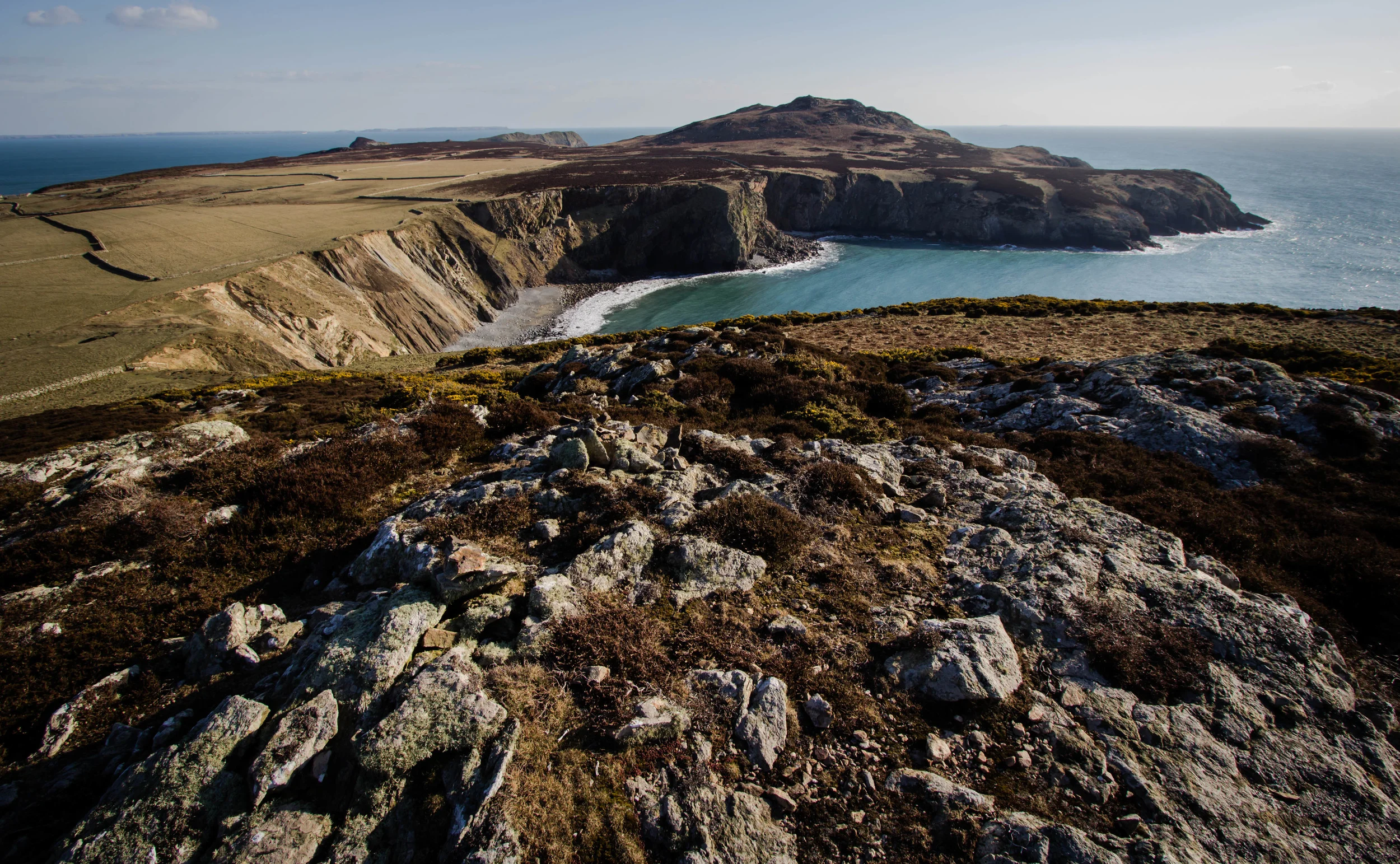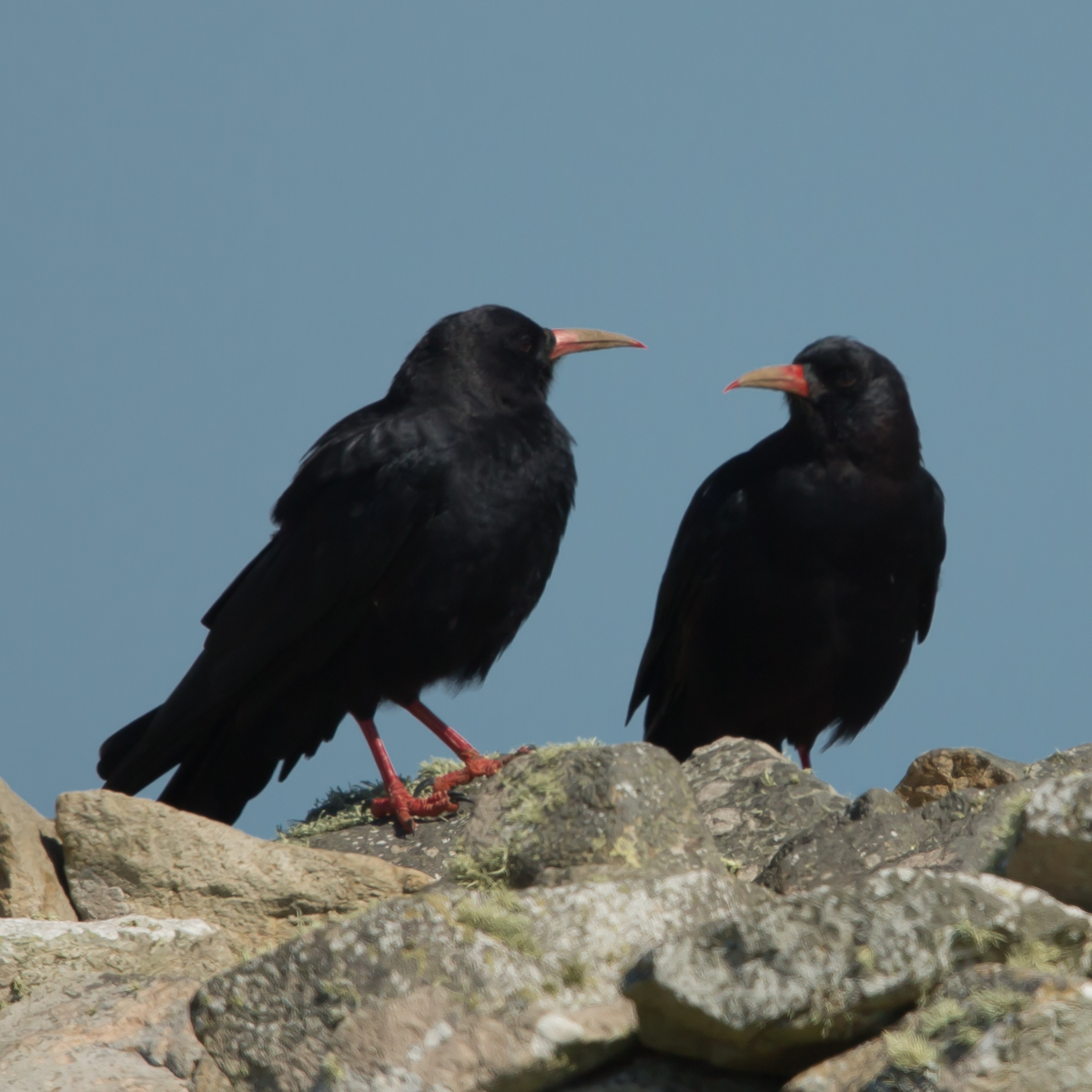RSPB reserve assistant Amy Cooper invites Ernest to her little slab off the Pembrokeshire coast, where choughs chow, Manx shearwaters shriek, white ponies slumber in thick sea fog and the fearsome Bitches await their next daring challenger.
The Bitches
Day by day I wake to the electric ‘chow’ of Britain’s rarest corvid, the chough, and fall asleep to the ethereal shriek of Manx shearwaters coming in overhead. I've been a reserve assistant here on Ramsey Island for two years, but it feels more like a lifestyle choice than a job.
The island lies approximately one kilometre off the Pembrokeshire coast. My nearest metropolis is St David’s – Britain's smallest city. On my weekly day off I could go to the mainland to gather supplies, but I’d rather roam the island at a snail’s pace, pausing often and spying on the local wildlife. Ramsey Island is two miles long from top to tail and is half a mile at its slimmest point. Wherever I am on the island I can always see or at least hear the sea.
I live in a small squat bungalow on the north of the island and share this space with one to four volunteers and a few hundred woodlice. From my bedroom window I can keep an eye on the grazing Welsh mountain ewes and listen to gulls and crows dropping things on the flat roof above my head.
In late summer my clear view across the sheep fields is interrupted by the three red deer stags that enjoy feeding and locking antlers outside. At this time of year their rut is a quiet and restrained affair, a rehearsal before the main event. We have 11 red deer, three stags, seven hinds and one young calf that was born just last year. Originally they were carried to Ramsey in a net below an RAF helicopter in the 1970s. A small population have resided here ever since. They aren't the only large mammals here - thy share the space with five welsh mountain ponies. Four of the ponies are a fairytale white and look especially enchanting when the island is smothered in thick sea fog.
Whenever I go for one of my weekend ambles I have the whole island at my disposal. There is a three-mile circular visitor path around the island with three offshoots so that the cairns on all three of Ramsey’s peaks can be reached.
There's also a shortcut that divides this island path in two. Many parts of the path are flanked by heather and we have three different types here. Ling is my favourite and blooms later than the others, it isn’t the vibrant purple that I love but the striking smell of honey. The insects seem to love it, too and the heathland bustles with honeybees, bumblebees and butterflies. Garden cross spiders lay there webs everywhere here in August as they hope to catch something like a juicy silvery moth. There are parts of the island that are out of bounds to all but the wardens, the volunteers and myself. This is mostly for safety and conservation reasons but the most inaccessible parts of the island can be seen by boat.
Thousand Islands Expeditions ferries people from the lifeboat station at St Justinians to Ramsey’s snug harbour. They also run boat tours around the island and sometimes I smuggle myself aboard to get a different view of my seasonal home. There are two things that I always look forward to in particular during these afternoon trips, the infamous Bitches and Whelps reef and the seabirds at Glyma.
In full flow the tidal race through the Bitches is nothing but fearsome – there is a two-metre standing wave and the tide can flow at 16 knots close to the harbour. It is here on these turbulent waters that brave and experienced kayakers come to test their skills. As impressive as the waters are on a good day, there aren’t words that would give justice to the volume of movement through the reef during a storm. For me this is when the Bitches are at their best.
The sea cliffs at Glyma are around the west side of the island and the boat has to pitch and roll its way past Atlantic grey seals and through the tiny offshore islands at Ramsey’s southern tip to get there. The southern islands are made up of Gwelltog, Beri and Cantwr. Ynys Cantwr is Chanter’s Island in English and it is said that when St Justinian had his chapel on Ramsey he would send priests in need of atonement to the cave there. They would be tied to a large rock inside the cave and would have to chant their penance for the rise and fall of two tides. If the repentant priest managed to survive amidst the raging tidal waters then God must have forgiven him, but more often than not, the priests were not pardoned. St Justinian believed that they hadn’t chanted fervently enough. Nowadays the cave is framed by kittiwakes in their nests and they scream their name at passing boats.
I can normally hear the chorus of razorbills and guillemots at Glyma before I see them clustered on their precarious ledges. If the wind is right I can pick up their unique scent, a mixture of fish, sea salt and ammonia. Birds are constantly coming and going, they have an awkward frenzied flight with wings much better designed for swimming. Sometimes, high above the confusion of seabirds, I can pick out the outline of a cruising falcon. There is a pair of peregrines that hunt here and they seem to have a particular fondness for razorbill. The sheer cliffs here are part of the volcanic formation that make up the highest peak on Ramsey. At 136 metres, Carn Llundain or London hill, is just a prominent geological bump but it has spectacular views. St David’s city is just visible as it protrudes out of its valley.
From my hilltop platform the warden’s whitewashed farmhouse is clearly visible. Greg and Lisa Morgan with their sheepdog Dewi have lived on and managed Ramsey for the RSPB for eight years. During the spring and summer they share the island with between one and 90 visitors per day, a reserve assistant and several volunteers. During autumn and winter, apart from regular visits by Derek Rees who delivers mail, supplies and sheep on his small aluminium boat, they’re alone on their island.
Ramsey has been described to me by many people on many different days as a magical place and I simply cannot argue with this.







